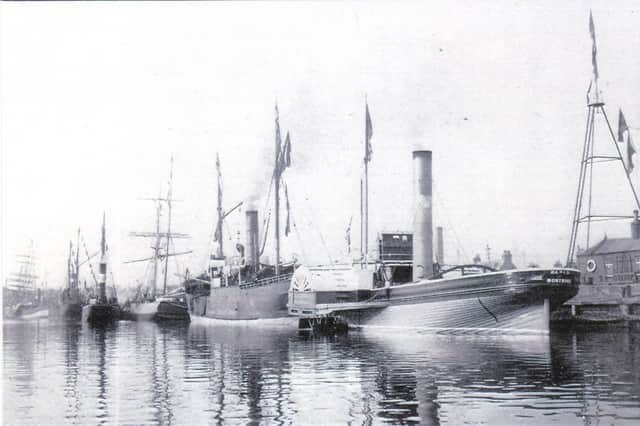Shipping Lines - Barque survived severe weather off Montrose, but not later Namibia run


The following is a report of her contact with local tugs, trawlers and RNLI lifeboat, entry into the harbour and subsequent departure for Fremantle.
The book “Montrose Lifeboat - 200 Years of Service” by the late Dorothy Morrison was published in 2000 to mark the bi-centenary of the setting up of a life-saving service 1800 making it the oldest such organisation in Scotland. Within Appendix 4 there are at least eight full pages containing lists of call-outs, or “shouts” as they are known as today, since 1869. Most are single-line entries. For example, “1896 October 7/8 Barque Banklands landed 3.” With the assistance of the late Councillor Ron Sturrock I consulted the bound volumes of the “Review” for the full story.
Advertisement
Hide AdAdvertisement
Hide AdThe Banklands had been built by John Reid & Co. Ltd. in their Newark shipyard at Port Glasgow in 1888, having been launched on 15th May of that year. Tonnage was recorded as 1,157 register. She was steel hulled and owned by Bank Shipping Co. In 1906 she was later owned by Rederi A/S Skien and re-named Skien (Manager Nils F Hoyer of Skien). She disappeared while on a voyage to Luderitz Bay, Namibia in 1913 while sailing from Swansea with a cargo of coal, all of her 16 crew being lost.
In June, 1888 the Banklands sailed from Glasgow to Melbourne on her maiden voyage (109 days), then on to Wellington, New Zealand where she loaded wool and returned from there to London in 79 days. The round trip Glasgow – London taking from 16th June, 1888 to 9th March, 1889.
About five o’clock on Wednesday afternoon, 7th October, 1896 the Liverpool-registered barque Banklands which had been chartered by Messrs. Millar, wood merchants, Montrose to take a cargo of dressed timber to Australia arrived in Montrose Bay from Leith, under tow by the Grangemouth steam tug Clyde having on board as pilot Alexander Stephen, Ferryden who had joined the ship at Leith.
The weather at the time was comparatively quiet but by seven o’clock a strong gale from east south east had arisen and there was becoming a strong swell over the bar and the making of a heavy sea along the coast.
Advertisement
Hide AdAdvertisement
Hide AdThe tug came up alongside the Banklands but after anchoring in the dark, she let the tow go. About nine o’clock the barque began to drift to the south of Scurdie Ness Lighthouse, sending up flares at intervals until about midnight.
Rockets were fired from the Lifeboat Station and the lifeboat Robert Henderson was soon launched with James Watt was coxswain. The tide was at half-flood and the lifeboat proceeded downriver in tow of the tug Rapid. Soon after the lifeboat departed another flare was sent up as the weather showed signs of calming down.
A little after one o’clock the following morning the lifeboat landed several crew from the Banklands at the lifeboat station where they were comfortably provided for. The lifeboat was pulled in close to the Lower Lighthouse where assistance was asked for by the crew for the landing of two ladies. A ready response was made by a number of spectators who reached into the water and brought ashore Mrs Lightoller, wife of the captain of the Banklands and her mother Mrs Widdows, and the eight-month old baby daughter of the captain.
They were all taken to the lifeboathouse where Mrs. Mears, wife of the lightkeeper had a splendid fire burning which they all enjoyed.
To be concluded.
Caption: Steam paddle tug Rapid berthed on the near right.